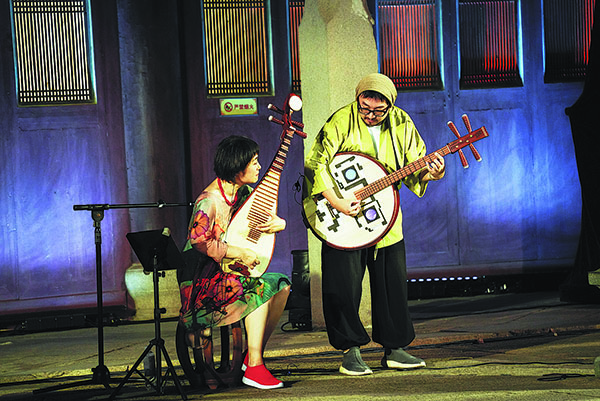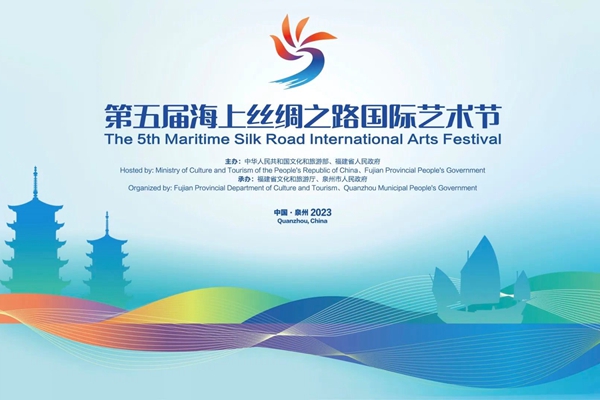Adding art to ancient architecture

The troupe brings together younger-generation musicians like Shen Yijie and Cai Kaidong (right). [Photo provided to China Daily]
While cooperating with local nanyin orchestra Dianshui Nanyue, Wu says she felt the profound affection for nanyin being passed down from one generation to another.
"While architecture is like soundless form of music, music is architecture with sound. Adding music infuses architecture with vitality. The fusion is remarkable and it should be widely practiced, as China has many ancient buildings," she says.
Wu believes the experience will also interest audiences in the culture and history of the instruments and architecture.
"I was greatly impressed by the performance. The combination of classical architecture and music was excellent, blending Chinese and international elements, as well as traditional and modern aspects," says singer-songwriter Chen Jingfei, who attended the festival.
She hopes that traditional music will be exposed to a wider audience, in a way that makes it easier to understand and connect with.
"When people enter a historical place to enjoy music, it evokes a feeling of reverence and generates curiosity for the space, adding an intriguing facet to the experience," says Yao Ying, the mastermind of the music festival who organized a similar event in Beijing in 2021.
"If we organize this kind of activity regularly, we will help more young individuals develop an understanding of our valuable heritage."
She says the goal is to promote Chinese culture through music and art, and she hopes the activities will attract international artists, as well as foster cultural exchanges.
The basic idea is that when musicians play in ancient surroundings, there is little post-processing or stereo technology to improve the sound.
"It may not be perfect, but it captures the unadulterated essence of music," Yao says.
She says that this kind of music festival highlights the essential roles of both ancient buildings and musicians.
Performing music in ancient architectural surroundings is not a simple process. The music should match the building in accordance with its characteristics and history.
"The integration is challenging because it necessitates thorough preparation and expertise in various fields, including historical research, musical understanding and architectural knowledge," Yao says.
An initiative called Quanzhou 100 Awakening was launched during the festival, inviting artists, musicians, movie and theater practitioners and architects to create works and exhibitions during their stay in Quanzhou from October to December.
"We welcome young artists who are interested in Quanzhou or who are Fujian natives, as well as those interested in local culture and the Maritime Silk Road. They're invited to create public art in the city's ancient districts," says Bao Dong, one of the initiators of the project.
"The injection of art into ancient surroundings will help to draw visitors beyond traditional attractions, enhancing the overall allure of this dynamic city."

 5th Maritime Silk Road International Arts Festival
5th Maritime Silk Road International Arts Festival 